Military Knowledge: Challenger 2

The FV4034 Challenger 2 tank is a British Main Battle Tank (MBT) manufactured by BAE Systems Platforms & Services for the British Army since 1998. This tank is the third Challenger tank series that served in the British Army.
The Challenger 2 is the third vehicle of this name, the first being the A30 Challenger, a World War II design using the Cromwell tank chassis with a 17-pounder gun. The second was the Persian Gulf War era Challenger 1, which was the British army’s main battle tank (MBT) from the early 1980s to the mid-1990s. The design process of the Challenger 2 tank was carried out between 1989 to 1994 by the British company “Vickers Defence Systems”, which also designed the Challenger 1 tank. Today, Challenger 2 is produced by BAE Systems Platforms & Services.
The Challenger 2 tank was developed on the basis of the Challenger 1, however despite outward similarities to the Challenger 1, only about 3% of components are interchangeable with the earlier vehicle.
The main armament is a L30A1 120-millimetre rifled tank gun, an improved derivative of the L11 gun used on the Chieftain and Challenger 1. Fifty rounds of ammunition are carried for the main armament, alongside 4,200 rounds of 7.62 mm ammunition for the tank’s secondary weapons: A L94A1 EX-34 chain gun mounted coaxially, and a L37A2 (GPMG) machine gun. The turret and hull are protected with second generation Chobham armour, also known as Dorchester. Powered by a Perkins CV12-6A V12 diesel engine, the tank has a range of 550 kilometres and maximum road speed of 59 kilometres per hour.

Challenger 2 benefits from a L30A1 120-millimetre rifled gun, firing both long rod penetrator and High Explosive Squash Head (HESH) ammunition natures. The rifled barrels increase stability and shooting accuracy. The “rifling” is for the purpose of exerting torque and thus imparting a spin to a projectile around its longitudinal axis during shooting to stabilize the projectile longitudinally by conservation of angular momentum, improving its aerodynamic stability and accuracy over smoothbore designs.
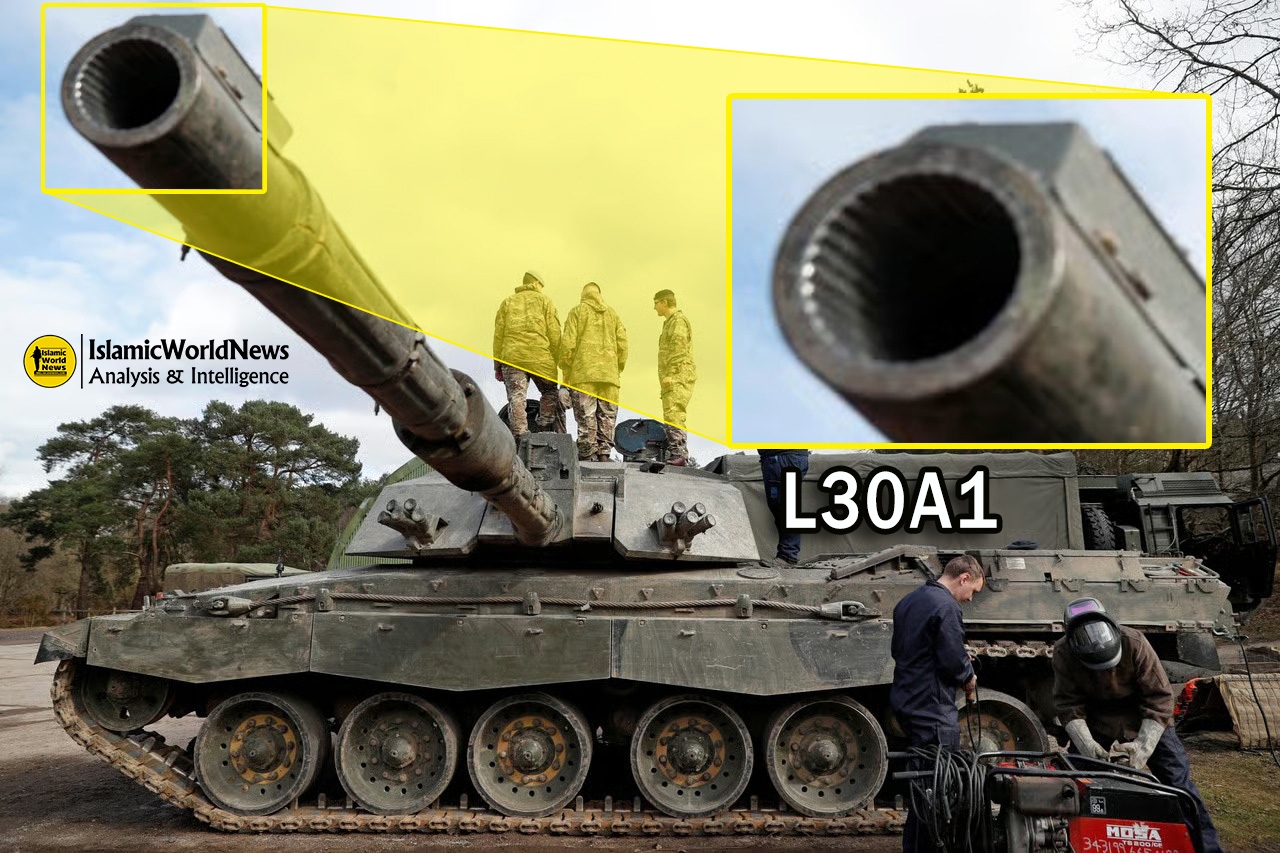
The commander has a panoramic SAGEM VS 580-10 gyrostabilised sight with laser rangefinder. The commander’s station is equipped with eight periscopes for 360° vision. The Thermal Observation and Gunnery Sight II (TOGS II), from Thales, provides night vision. The thermal image is displayed on both the gunner’s and commander’s sights and monitors. The gunner has a stabilised primary sight using a laser rangefinder, with a range of 200 m to 10 km. The driver’s position is equipped with a Thales Optronics image-intensifying Passive Driving Periscope (PDP) for night driving and a rear view thermal camera.
The fire control system of Challenger 2 is the same as the US M1A1 Abrams and the French Leclerc MBT. Also, Challenger 2 and Abrams tanks use the same battlefield management system, which allows easy exchange of information between British and American tanks.

The turret and hull are protected with second generation Chobham armour, also known as Dorchester. The Dorchester armor, although lighter than the Chobham, provides better protection for the Challenger-2 tank.
Challenger 2 is also equipped with an automatic fire extinguishing system in addition to the Nuclear, Biological and Chemical (NBC) protection system and Visual and Infrared Screening Smoke (VIRSS) systems.
The Challenger 2 tank is designed in such a way that its detection and tracking by enemy detection radars is as low as possible. Therefore, the FV4034 Challenger 2 tank can be considered one of the most stealth tanks in the world.
One of the most confidential information about main battle tanks is the amount of armor in different parts of it, which is usually published in an exaggerated form. An image of the actual amount of armor used in Challenger 2 has been published by a website that claims to have information about Challenger 2. The images below show the armor’s resistance against high-explosive anti-tank (HEAT) projectiles and kinetic energy (KE) projectiles.
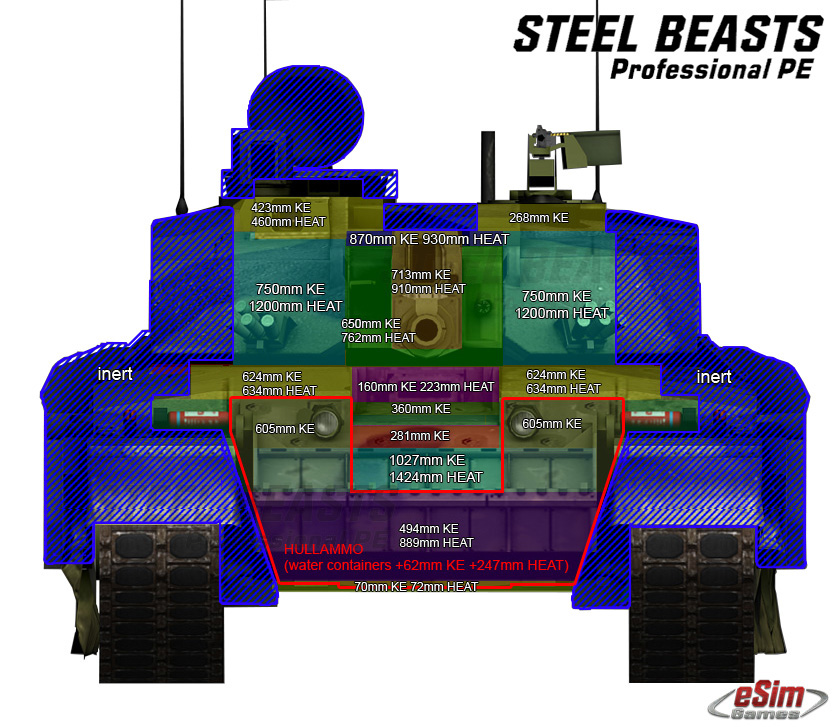
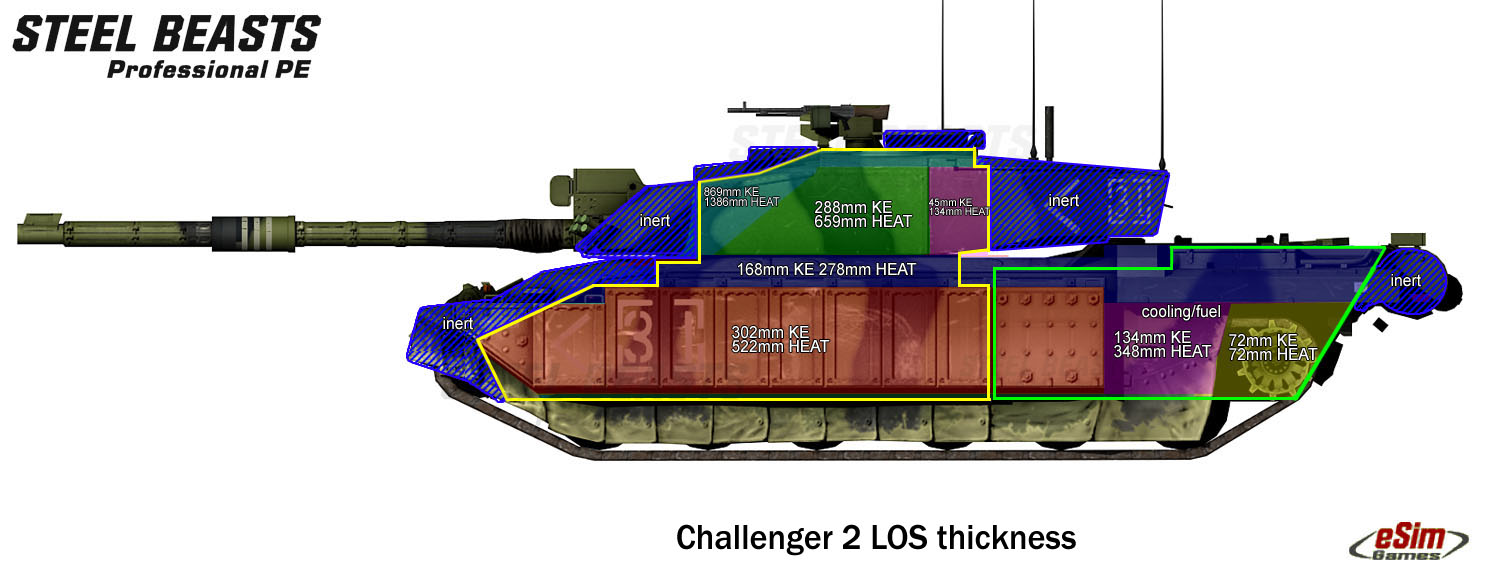
The Challenger 2 Powered by a Perkins CV12-6a turbocharged diesel engine. Using this engine, the Challenger 2 tank can reach a maximum range of 550 km and a maximum speed of 59 km/h.
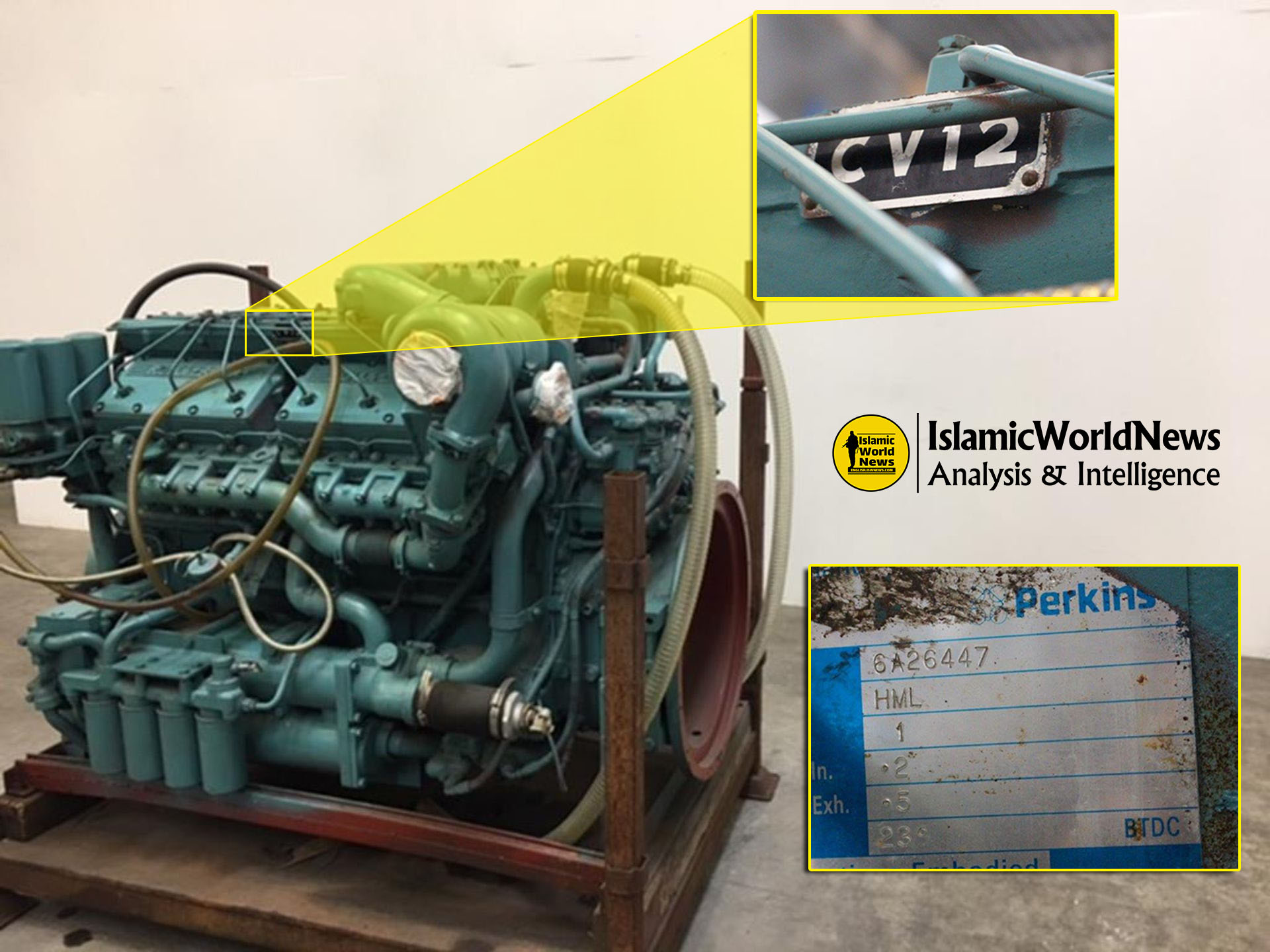
Challenger 2 uses Horstman Defence Systems second-generation hydrogas suspension units, which is an improved suspension system, along with improved gearbox and a Hydraulic Track Tensioner provide platform stability covering flat road surfaces through to rough cross-country terrain.
The Challenger-2 is the Royal Army’s only main battle tank (MBT) today. The country of Oman has also recruited 38 units of this British tank.
The Challenger 2 tank has participated in wars such as Bosnia, Kosovo and the Persian Gulf War. In 2003, during the Desert Storm operation in Iraq, a Challenger 2 tank seriously damaged another Challenger 2 tank, and there were no casualties.
Challenger 2 Updates:
CLIP update:
The Challenger Lethality Improvement Programme (CLIP) was a programme to replace the current L30A1 rifled gun with the smoothbore Rheinmetall 120 mm gun currently used in the Leopard 2 and M1 Abrams. The use of a smoothbore weapon would have allowed Challenger 2 to use NATO standard ammunition, including tungsten-based kinetic energy penetrators which do not have the same political and environmental objections as depleted uranium rounds.
The production lines for rifled 120 mm ammunition in the UK have been closed for some years so existing stocks of ammunition for the L30A1 are finite. Challenger 2 fitted with 120 mm smoothbore gun for trials A single Challenger 2 was fitted with the L55 and underwent trials in January 2006. The smoothbore gun was the same length as the L30A1 and was fitted with the rifled gun’s cradle, thermal sleeve, bore evacuator and muzzle reference system.
Early trials apparently revealed that the German tungsten DM53 round was more effective than the depleted uranium CHARM 3. The ammunition storage and handling arrangements had to be changed to cater for the single-piece smoothbore rounds, instead of the separate-loading rifled rounds. Other improvements were also considered, including a regenerative NBC protection system.


HAAIP update:
Updates to the automotive components of Challenger 2 are being undertaken as part of the ongoing Heavy Armour Automotive Improvement Programme (HAAIP), which is expected to continue until 2031, and expected to align with the Challenger 3 programme. The HAAIP programme “will be made to existing in-service Challenger 2 tanks to increase their mobility and stability, both of which are critical to providing the foundation for the new turret and systems that will upgrade the vehicle to a Challenger 3.”
The overall scope of HAAIP includes:
– Upgraded CV12-9A engines for Challenger 3 and CRARRV
– Third Generation Hydrogas Suspension
– New Hydraulic Track Tensioners (HTT) with inline accumulators
– Improved Electric Cold Start System (Intake Manifold Heater)
– Unspecified new components fitted to improve the transmissions
– New Main Engine Air Intake Filters
– Improved Main Engine/Transmission Cooling; fitting new high efficiency radiators and fans.
TES Megatron update:
The Megatron update, or Challenger 2 TES Megatron, was first unveiled in 2013 at the DVD Defense Expo in Millbrook. Another example of Megatron’s update was also unveiled in 2016.
This update includes:
– Adding reactive and passive armors to deal with new types of threats on the battlefield, which allows to equip Megatron with additional types of armor depending on the type of threats.
– Upgrading the L30A1 gun to be able to fire more of the existing NATO ammunitions.
– Installation of a remote control weapons system called Enforcer.
– Using of a new armor that is a combination of Dorchester’s standard composite armor, reactive, passive and rod armor and Chobham armor.
Megatron has a maximum weight of 74,840 kg with TES armor and 62,500 kg in standard configuration.

Black Night update:
In 2018, following the update program of the Challenger-2 tank, an update called Black Night was implemented, which practically became a different product. Two examples of this update have been seen to date, differing only in “gun type”. One example uses the same L30A1 gun and another example uses the L55 gun that was previously coordinated with this tank in the CLIP update.
Features announced for the Black Night update by BAE include:
– Active Protection System – Systems allow the tank to detect incoming anti-tank missiles or armour penetrating rounds and automatically launches a counter-explosive to neutralise the threat.
– Laser Warning System – When targeted by enemy weapon systems, the tank can identify the source of the threat then automatically slew the gun to point at that source, making it quicker for the crew to counter-fire.
– Regenerative braking – The tank has been made more energy efficient by using less energy-hungry kit and installing regenerative braking in the turret, which generates power when the gun slows down into position.
– Thermal Imaging Technology – Front and rear infrared cameras (similar to those used in television programmes such as Planet Earth II) provide extremely sharp night imagery, helping troops identify potential threats and move undetected in hostile situations, while also shaving valuable seconds off reaction times.
– Accelerated fightability – New equipment controlling tank’s weaponry is faster, meaning the crew can identify an enemy, target and engage more quickly.
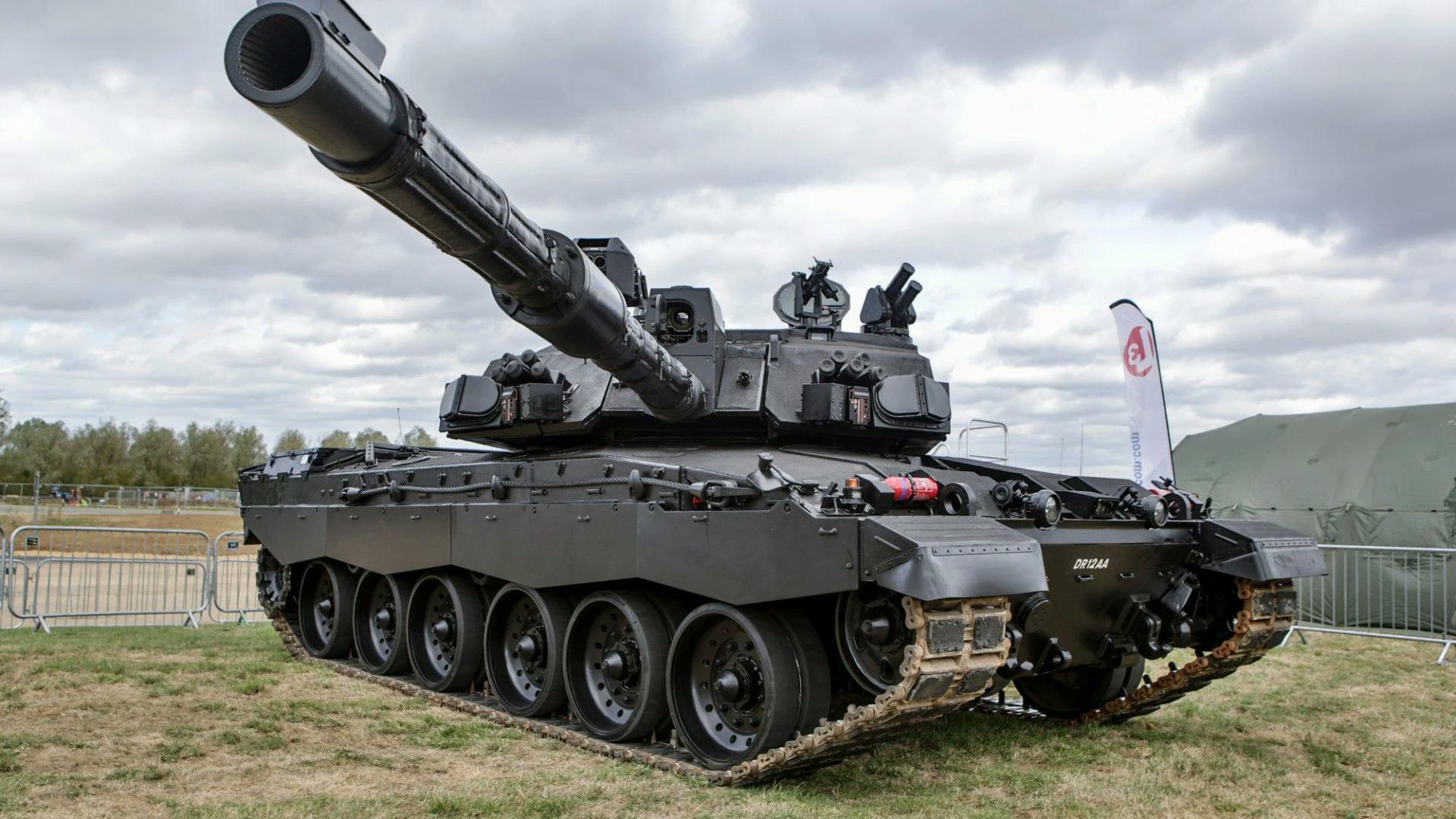
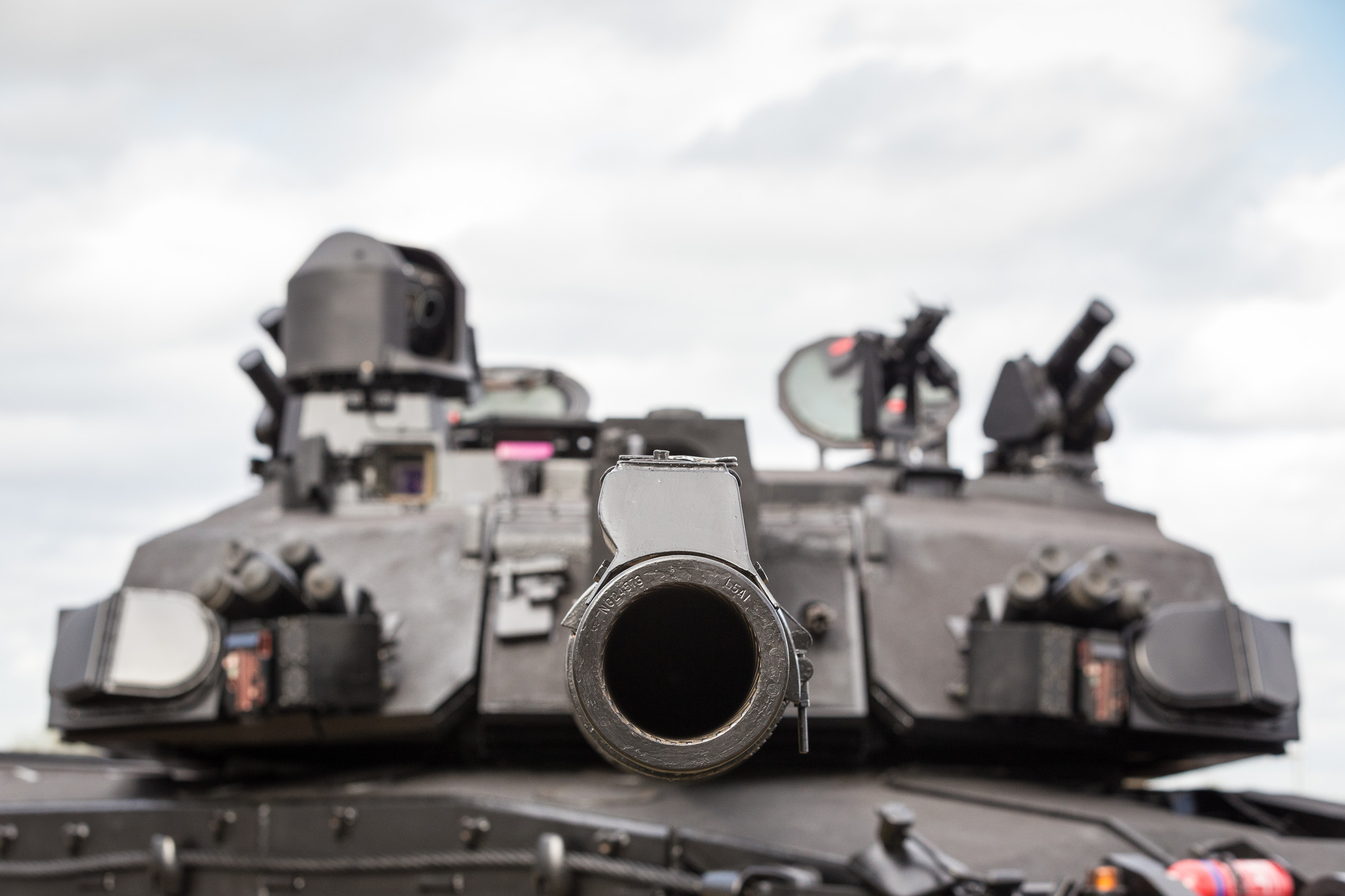

CSP / LEP update:
In 2005, the British MoD recognised a need for a Capability Sustainment Programme (CSP) to extend the service life of the Challenger 2 into the mid-2030s and upgrade its mobility, lethality and survivability. The CSP was planned to be complete by 2020 and was to combine all the upgrades from CLIP, including the fitting of a 120 mm smoothbore gun.
By 2014, the CSP programme had been replaced by the Life Extension Programme (LEP) which shared a similar scope of replacing obsolete components and extending the tank’s service life from 2025 to 2035, however the 120 mm smoothbore gun had seemingly been abandoned.
In 2015, the British Army provided an insight into the scope of the LEP, dividing it into four key areas, namely:
– Surveillance and target acquisition: Upgrades to the commander’s primary sight and gunner’s primary sight, as well as the replacement of the thermal observation and gunnery sights (TOGS) with third-generation thermal imaging.
– Weapon control system: Upgrades to the fire control computer, fire control panel and gun processing unit.
– Mobility: Upgrades including third-generation hydrogas suspension, improved air filtration, CV-12 common rail fuel injection, transmission and cooling.
– Electronic architecture: Upgrades to the gunner’s control handles, video distribution architecture, generic vehicle architecture compliant interfaces, increased onboard processing and improved human machine interface.
Challenger 3 update:
This update was implemented to consolidate the experience of all the upgrades made on the Challenger-2 tank and was unveiled in 2021. The upgrades that were first done on the Megatron and then on the Black Night continued on the Challenger 3. In order to increase the survivability of tank in the battlefield, two models of active protection systems (APS) have been used on this tank: MUSS (MUltifunctional Self protection System) and Rheinmetall’s ROSY Rapid Obscurant System.

With the introduction of Megatron in 2016 and Black Knight in 2018, a proposal design was also unveiled by Rheinmetall in 2019. The design included the development of a completely new turret with fully digital electronic architecture, day and night sights for the commander and gunner, and a Rheinmetall L55 120 mm smoothbore gun. Whilst a more substantial upgrade than Black Night, the turret was developed on Rheinmetall’s initiative and was not funded by the UK MoD.
In June 2019, BAE Systems and Rheinmetall formed a joint venture company, based in the UK, named Rheinmetall BAE Systems Land (RBSL). Despite the merger, the company was still expected to present two separate proposals for the LEP contract, however, at DSEI 2019, RBSL instead opted to only showcase the Rheinmetall proposal.
This upgrade includes a new turret with a fully digital electronic architecture, a Thales Orion day and night sight for the commander, and a Thales DGNS T3 day and night sights for the gunner, along with the use of a 120mm Rheinmetall L55A1 gun. The turret architecture also allows for an active protection system or an Improvised Explosive Electronic Warfare system to be installed in the future if required by the user.

In 2020, the UK MoD argued against buying a new main battle tank from overseas instead of pursuing the Challenger 2 LEP, stating that an upgraded Challenger 2 would be “comparable – and in certain areas superior” to a Leopard 2 or Abrams.
In 2021, the UK MoD published its long-awaited command paper, Defence in a Competitive Age, which confirmed the British Army’s plans to upgrade 148 Challenger 2 tanks and designate them Challenger 3. The UK MoD confirmed the contract with RBSL had been signed, valued at £800 million (US$1 billion), on 7 May 2021. Rheinmetall’s more extensive upgrade proposal, including the new 120 mm smoothbore gun, had been accepted. The initial operating capability for the upgraded tanks is expected by 2027, with full operation capability expected to be declared by 2030.

Types of tanks and combat vehicles based on Challenger-2 chassis:
Trojan combat engineering armored vehicle:
The Trojan Armoured Vehicle Royal Engineers is a combat engineering vehicle designed as a replacement for the Chieftain AVRE (ChAVRE). It uses the Challenger 2 chassis, and carries an articulated excavator arm, a dozer blade, and attachment rails for fascines. Entering service in 2007, 33 were produced.
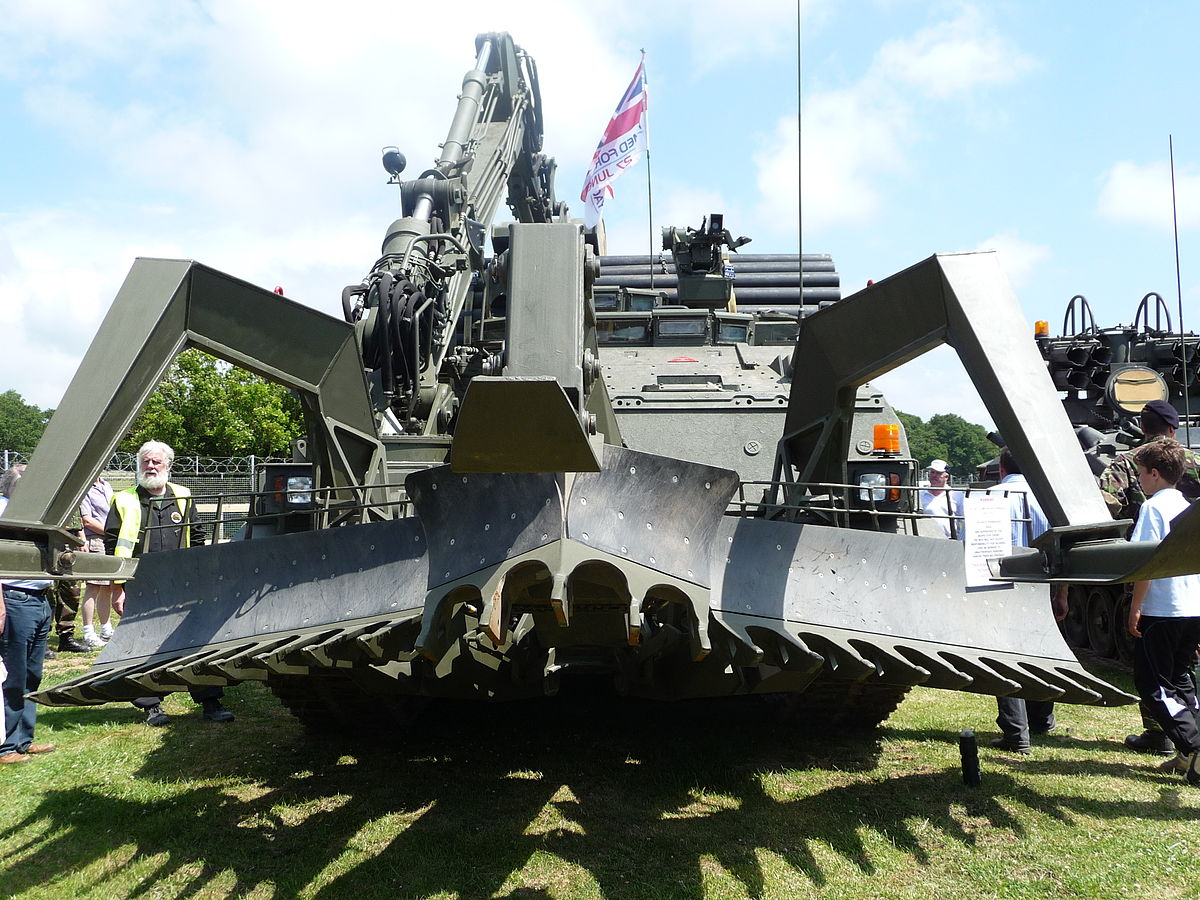
Challenger 2 Driver Training Tank:
The Challenger 2 Driver Training Tank (DTT) is based on the Challenger 2 hull. The turret has been replaced with a fixed weighted superstructure to accommodate an instructor and up to 4 trainees. The design is similar to the Challenger 1 derived Challenger Training Tank (CTT). Weighting the superstructure replicates the weight (and therefore also the driving characteristics) of the standard tank in operational service.

Titan armoured bridge layer:
The Titan armoured bridge layer is based on aspects of the Challenger 2 running gear and replaced the Chieftain Armoured Vehicle Launched Bridge (ChAVLB). The Titan came into service in 2006 with the Royal Engineers, with 33 in service. Titan can carry a single 26-metre-long bridge or two 12-metre-long bridges. It can also be fitted with a bulldozer blade.
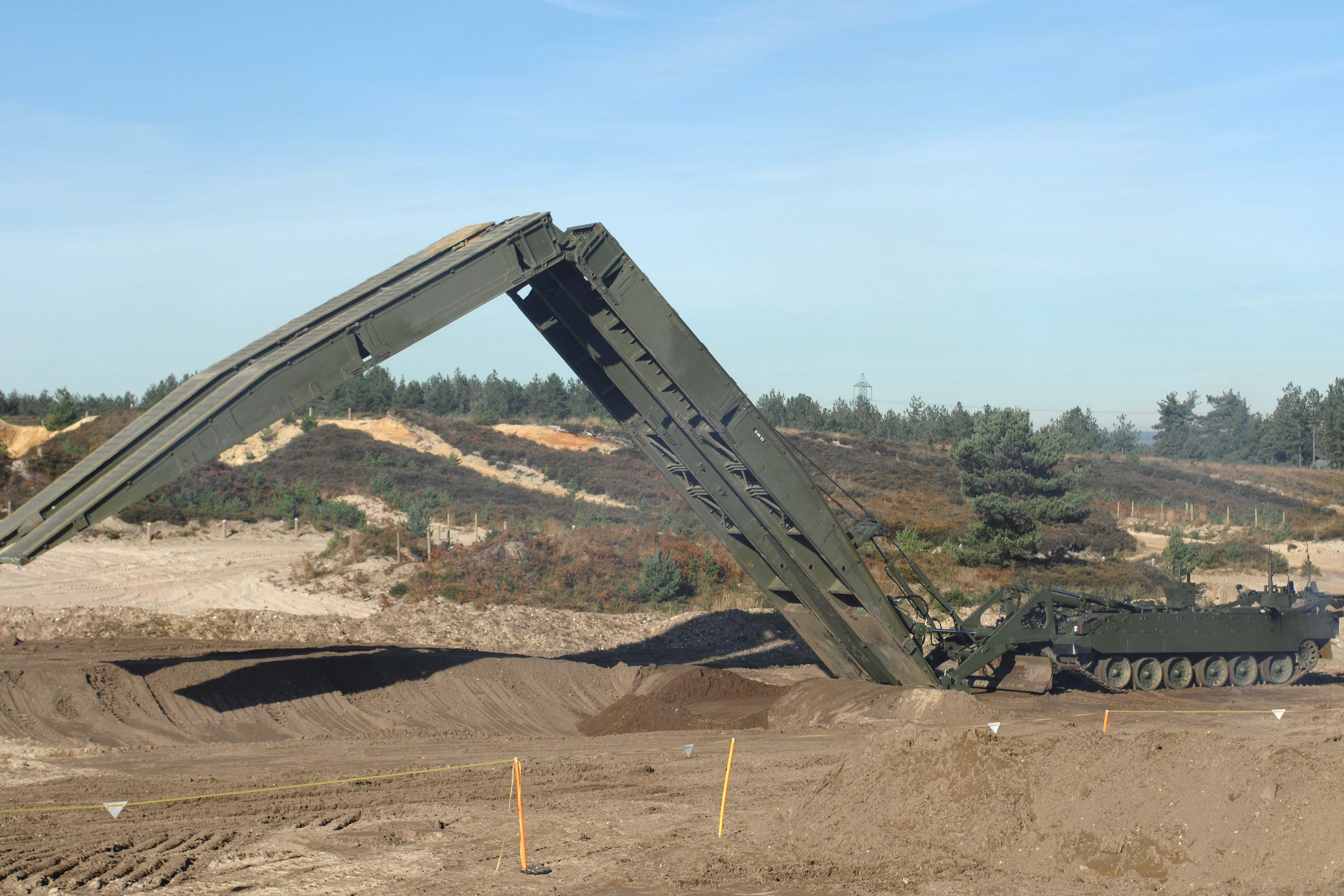
Challenger 2E:
Challenger 2E The Challenger 2E is an export version of the tank. It has a new integrated weapon control and battlefield management system, which includes a gyrostabilised panoramic SAGEM MVS 580-day/thermal sight for the commander and SAGEM SAVAN 15 gyrostabilised day/thermal sight for the gunner, both with eye-safe laser rangefinder.
This allows hunter/killer operations with a common engagement sequence. An optional servo-controlled overhead weapons platform can be slaved to the commander’s sight to allow operation independent from the turret.
The power pack has been replaced by a new 1,500 hp (1,100 kW) EuroPowerPack with a transversely mounted MTU MT883 diesel engine coupled to Renk HSWL 295TM automatic transmission.
The increase in both vehicle performance and durability is significant. The smaller volume but more powerful EuroPowerPack additionally incorporates as standard a cooling system and air intake filtration system proved in desert use.
The free space in the hull is available for ammunition stowage or for fuel, increasing the vehicle’s range to 550 km (340 mi). This power pack was previously installed on the French Leclerc tanks delivered to the UAE as well as the recovery tank version of the Leclerc in service with the French Army. Further developed versions of the EuroPowerPack have more recently been installed in the latest serial produced Korean K2 Black Panther tank.
BAES announced in 2005 that development and export marketing of 2E would stop. This has been linked by the media to the failure of the 2E to be selected for the Hellenic Army in 2002, a competition won by the Leopard 2.
Challenger Armoured Repair and Recovery Vehicle:
The Challenger Armoured Repair and Recovery Vehicle (CRARRV) is an armoured recovery vehicle based on the Challenger 1 hull, designed to repair and recover damaged tanks on the battlefield.
Ordered in 1985, and delivered between 1988 and 1993, the CRARRV has subsequently been updated to use a Challenger 2 powertrain consisting of a CV12-5C/6C engine with TN54E transmission.
The British Army ordered 80 vehicles. Four CRARRVs were purchased by Oman to complement their acquisition of Challenger 2 tanks. CRARRVs were first deployed in action in the lead up to the First Gulf War, Operation Granby in 1991. They were subsequently deployed during the 2003 invasion of Iraq, Operation Telic in 2003, alongside standard Challenger 2 MBTs.
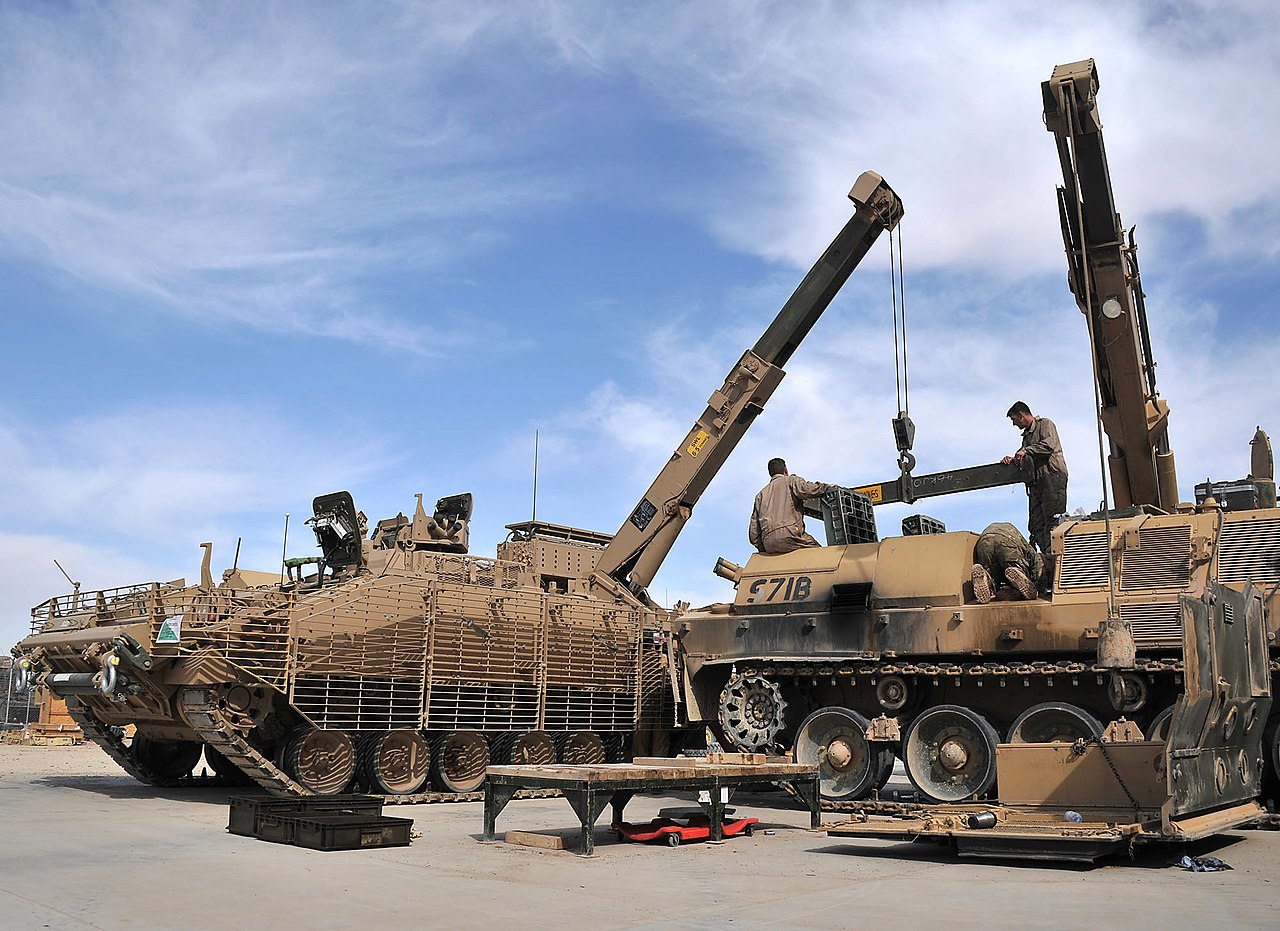
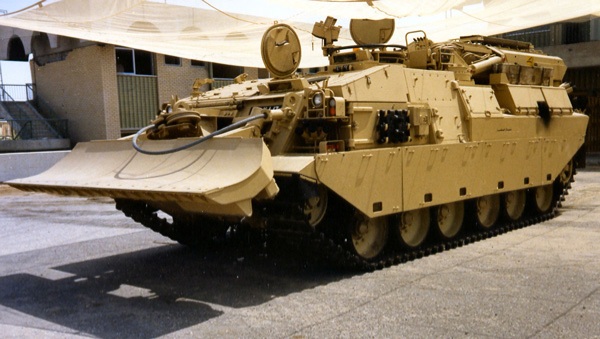
Challenger 2 specifications:
– Type: Main Battle Tank (MBT)
– Manufacturer: BAE Systems
– In service: since 1998
– Wars: Iraq war, Kosovo war, Bosnian war, Afghanistan war
– Unit cost: £4,217,000
– Mass: 64 tons
– Length: 8.3 m
– Width: 3.5 m
– Height: 2.49 m
– Crew: 4 (commander, gunner, loader–operator, driver)
– Engine: Perkins CV12-6A V12 diesel, 26.1 L, 1200 bhp (890 kW)
– Fuel capacity: 1,592 litres
– Operational range: 550 km on-road, 250 km off-road
– Speed: 59 km/h on-road, 40 km/h) off-road
– Origin: UK

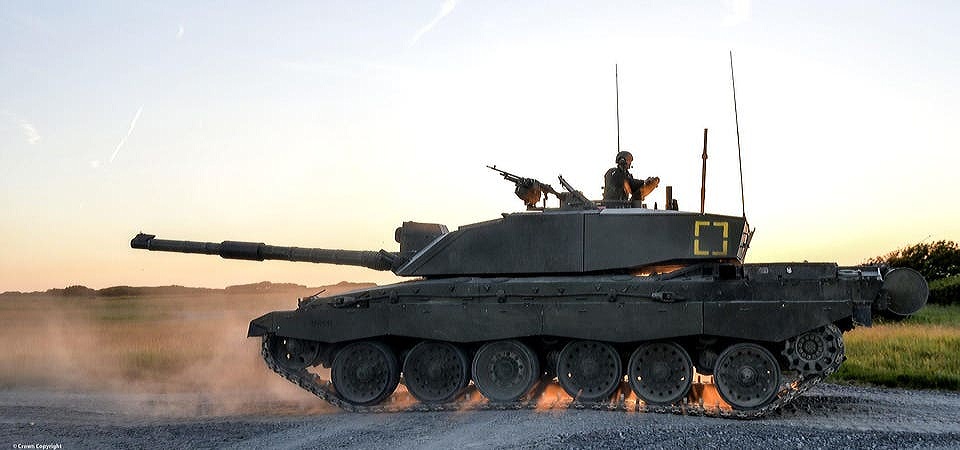
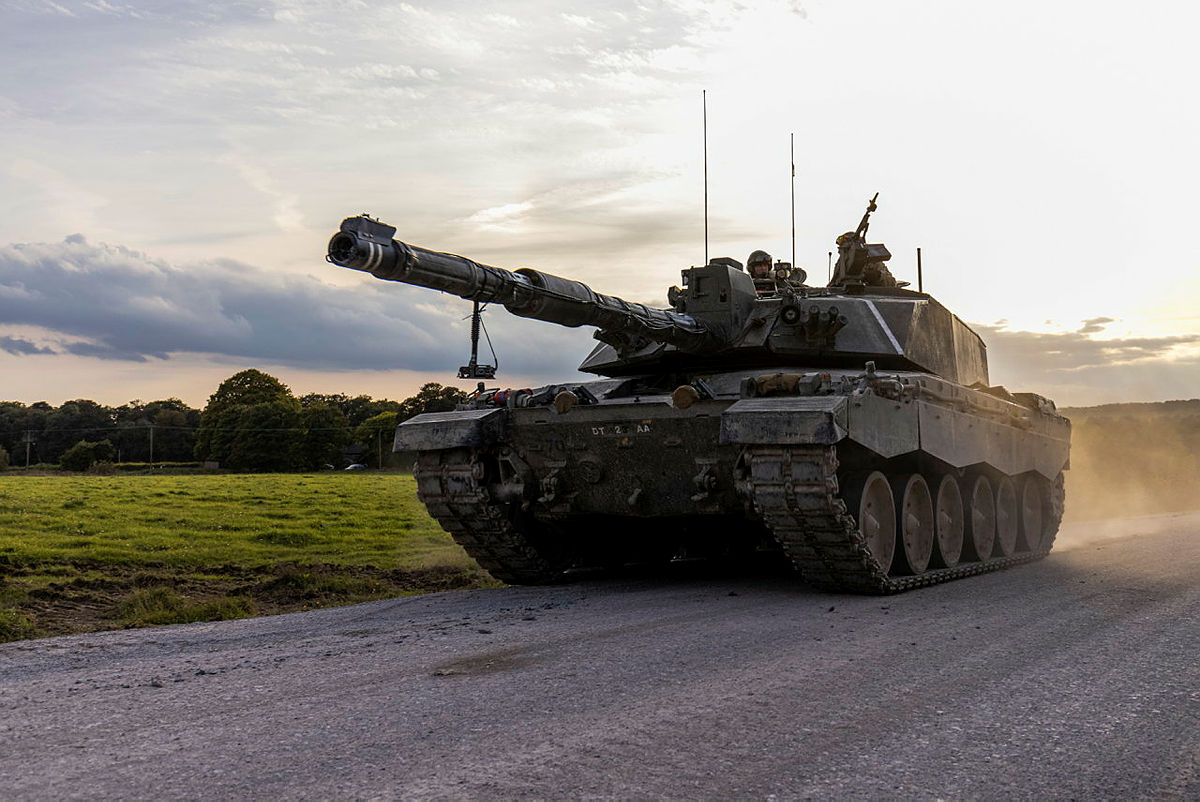

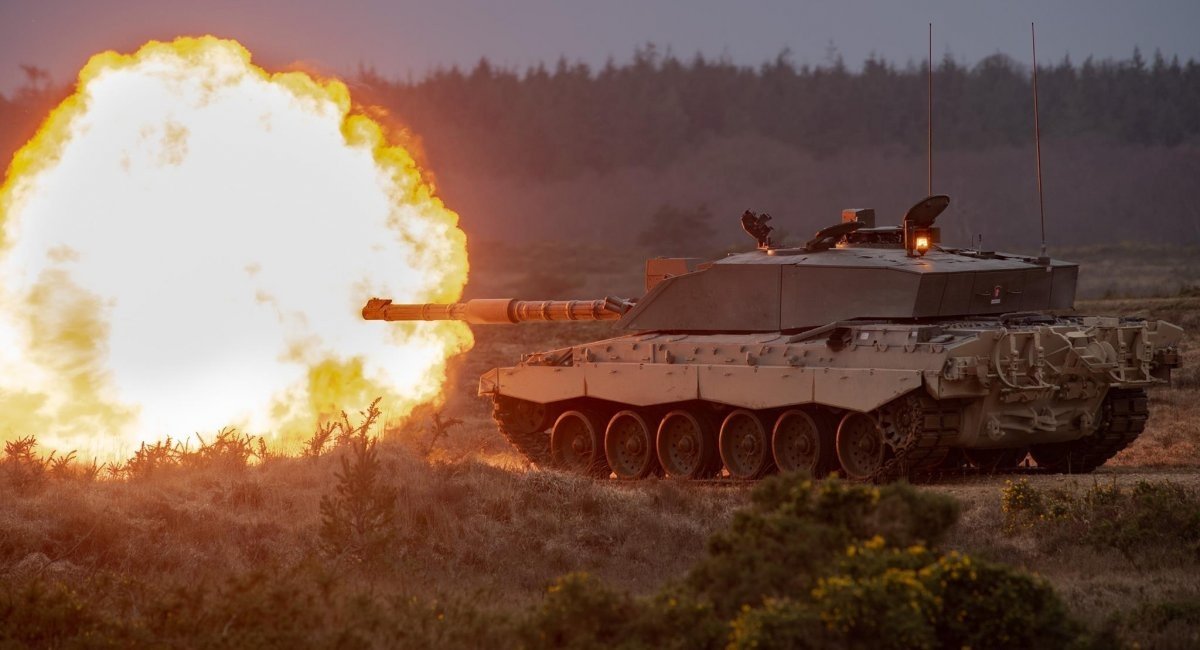
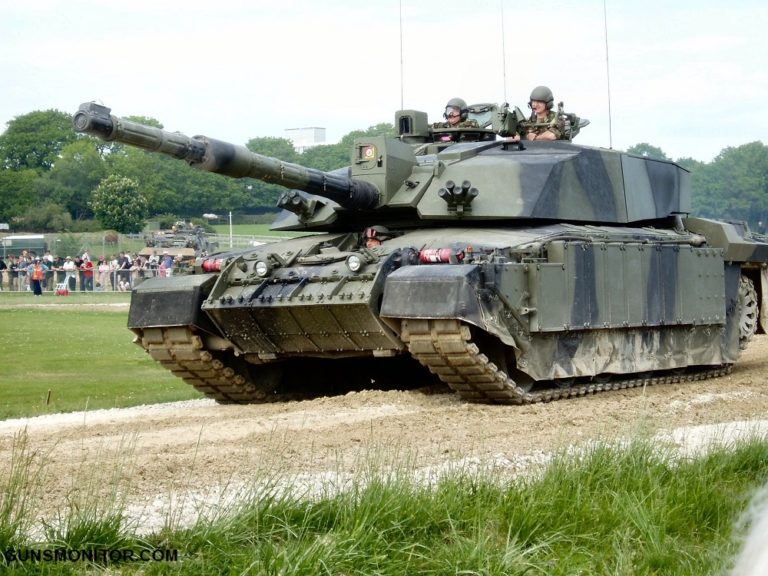
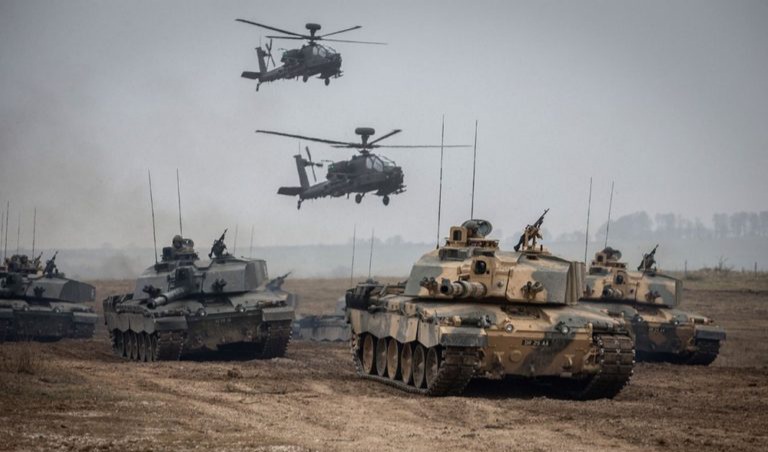
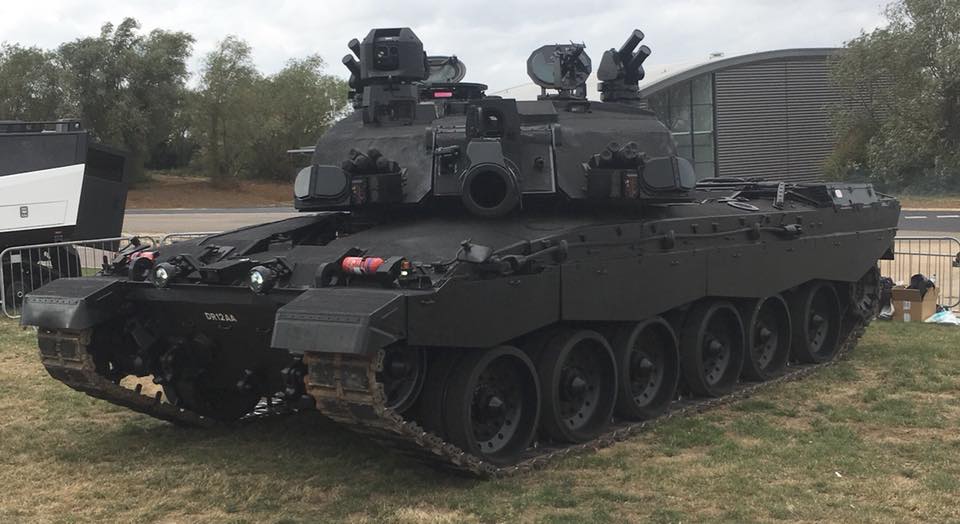
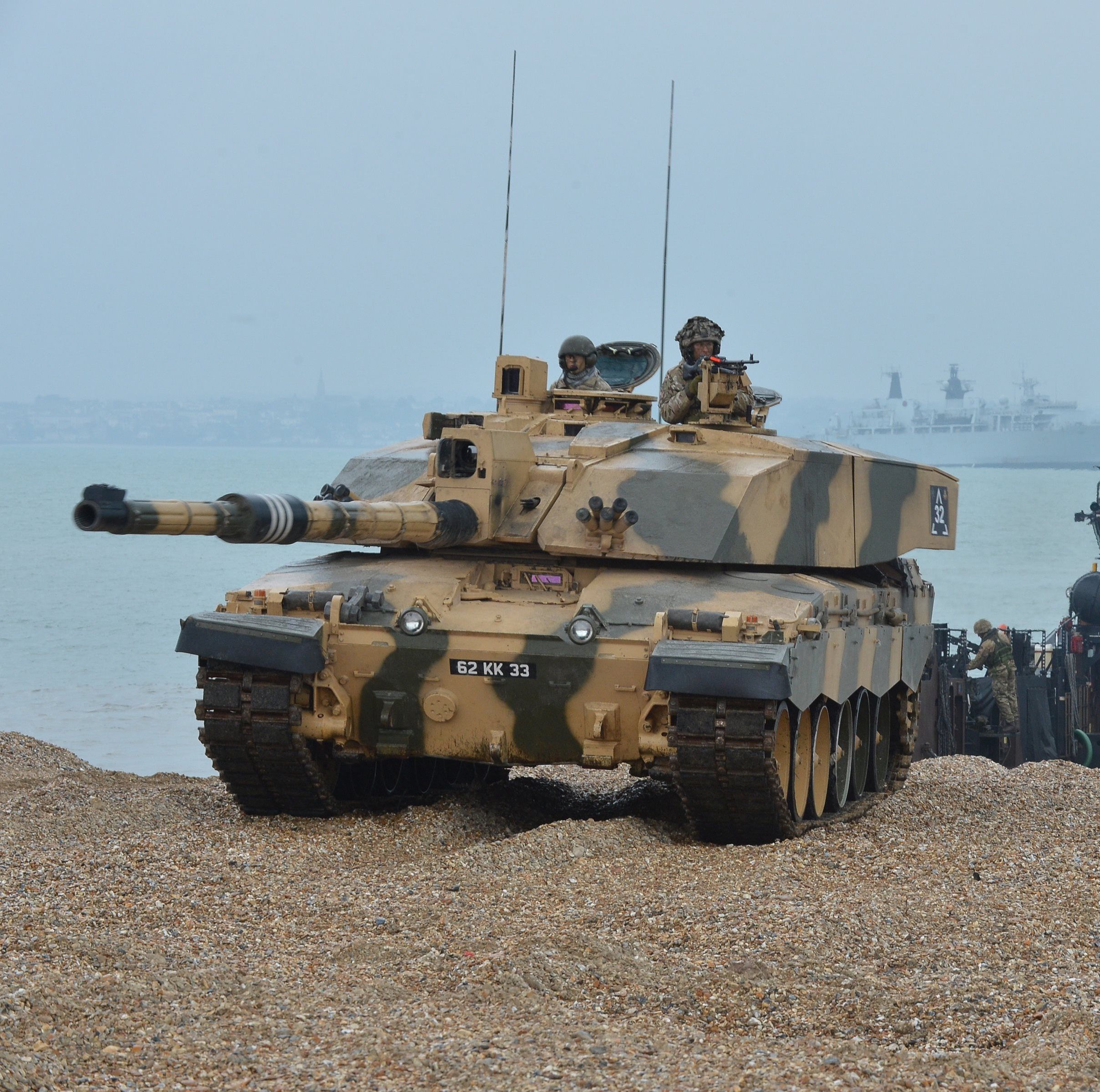

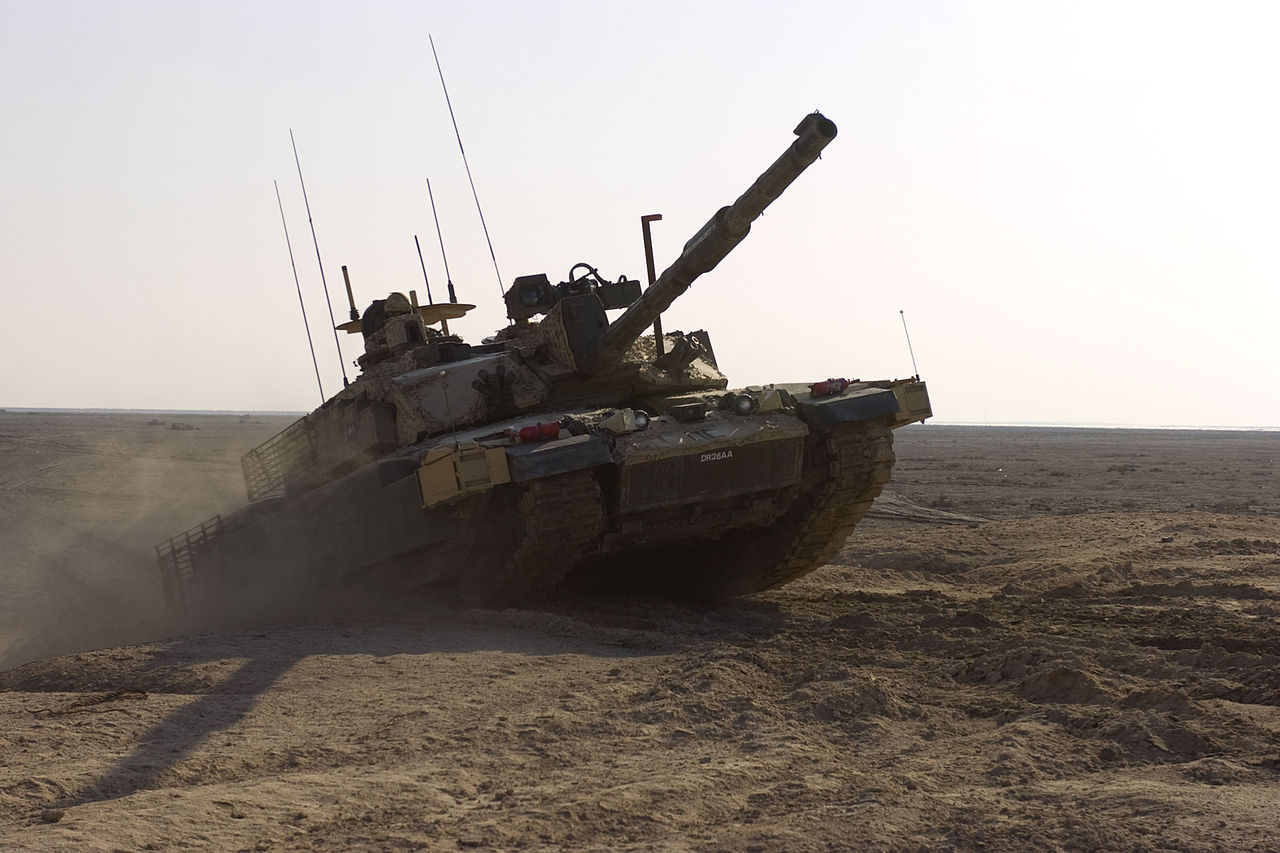

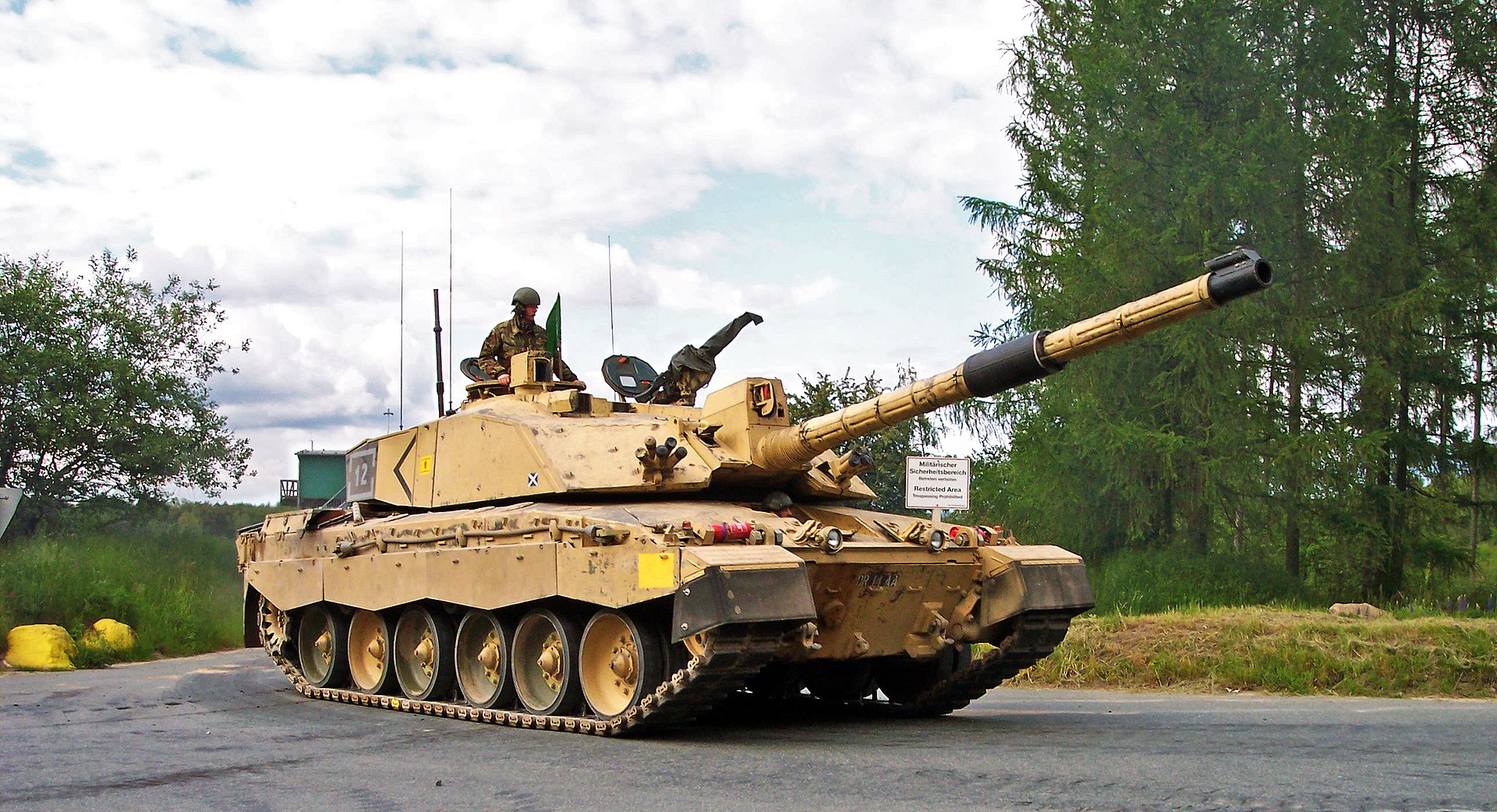
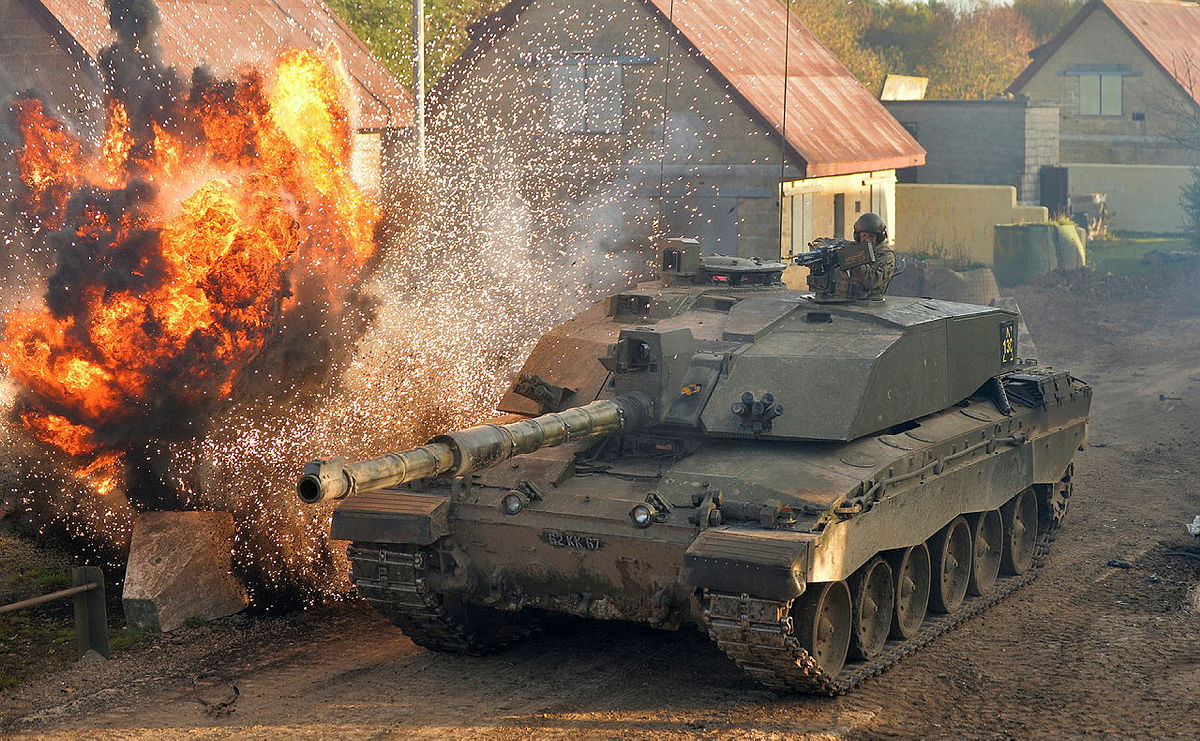
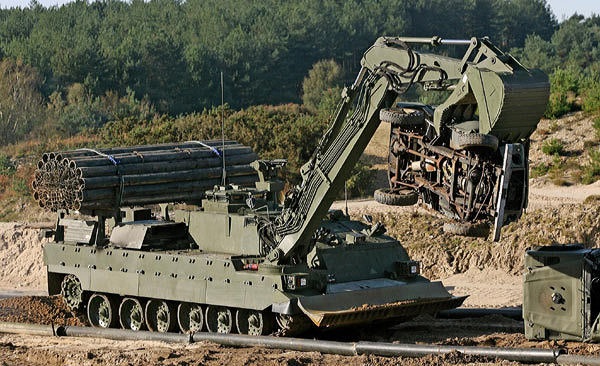
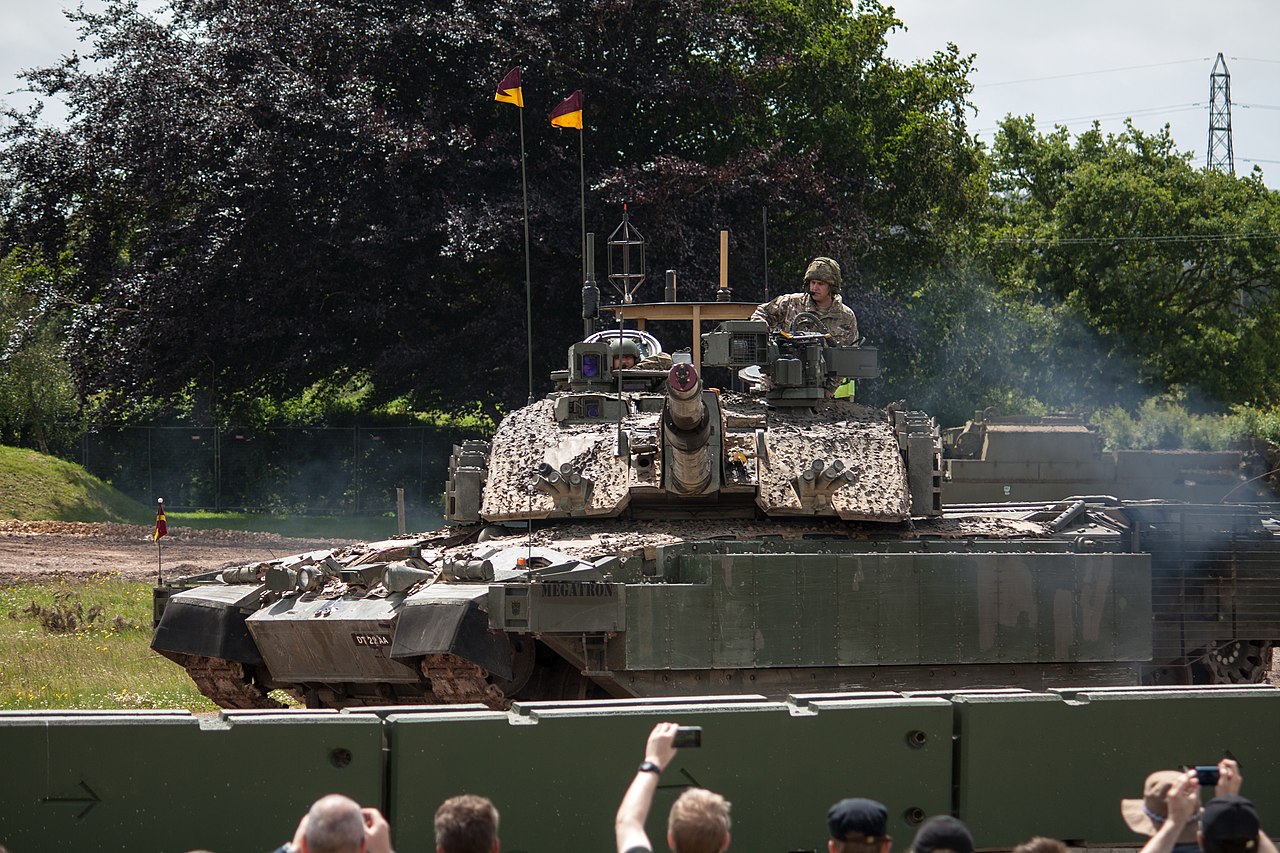
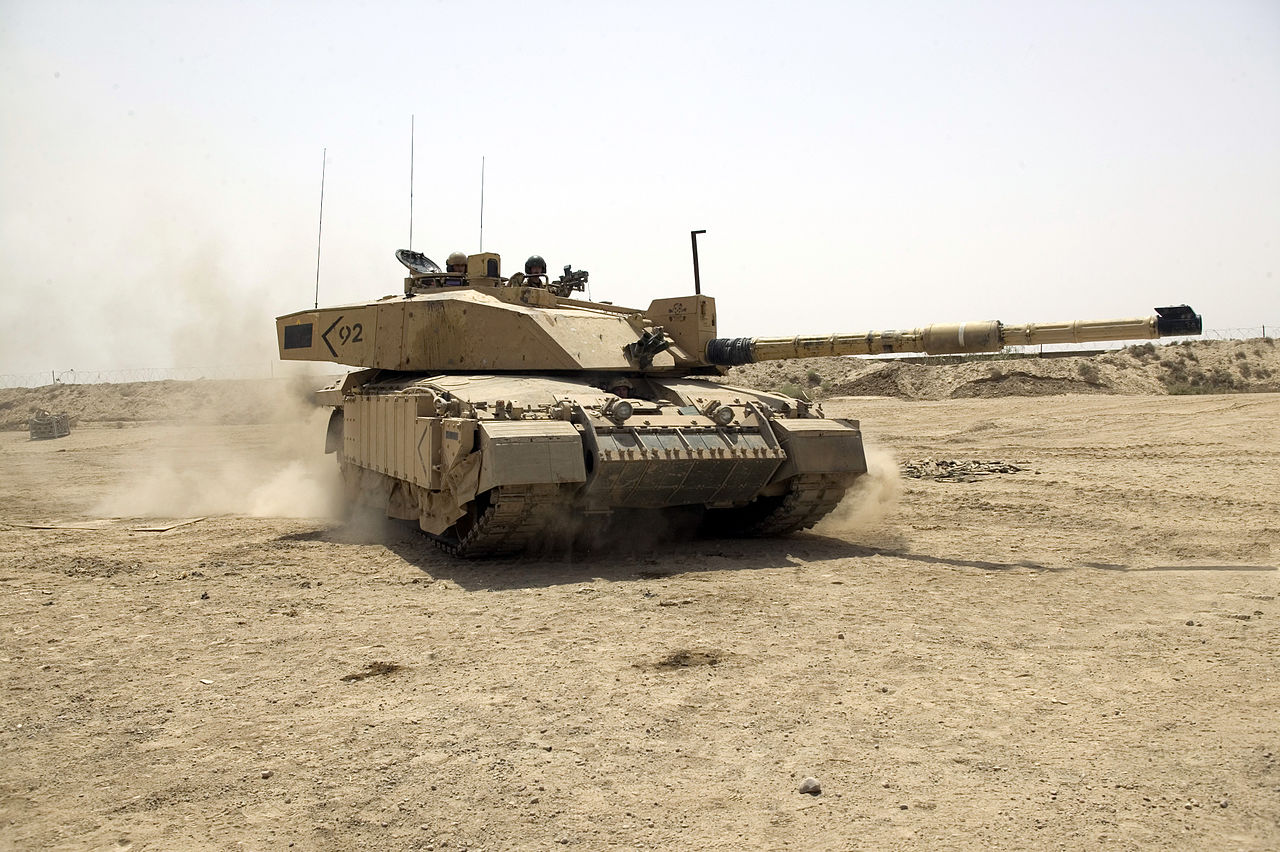
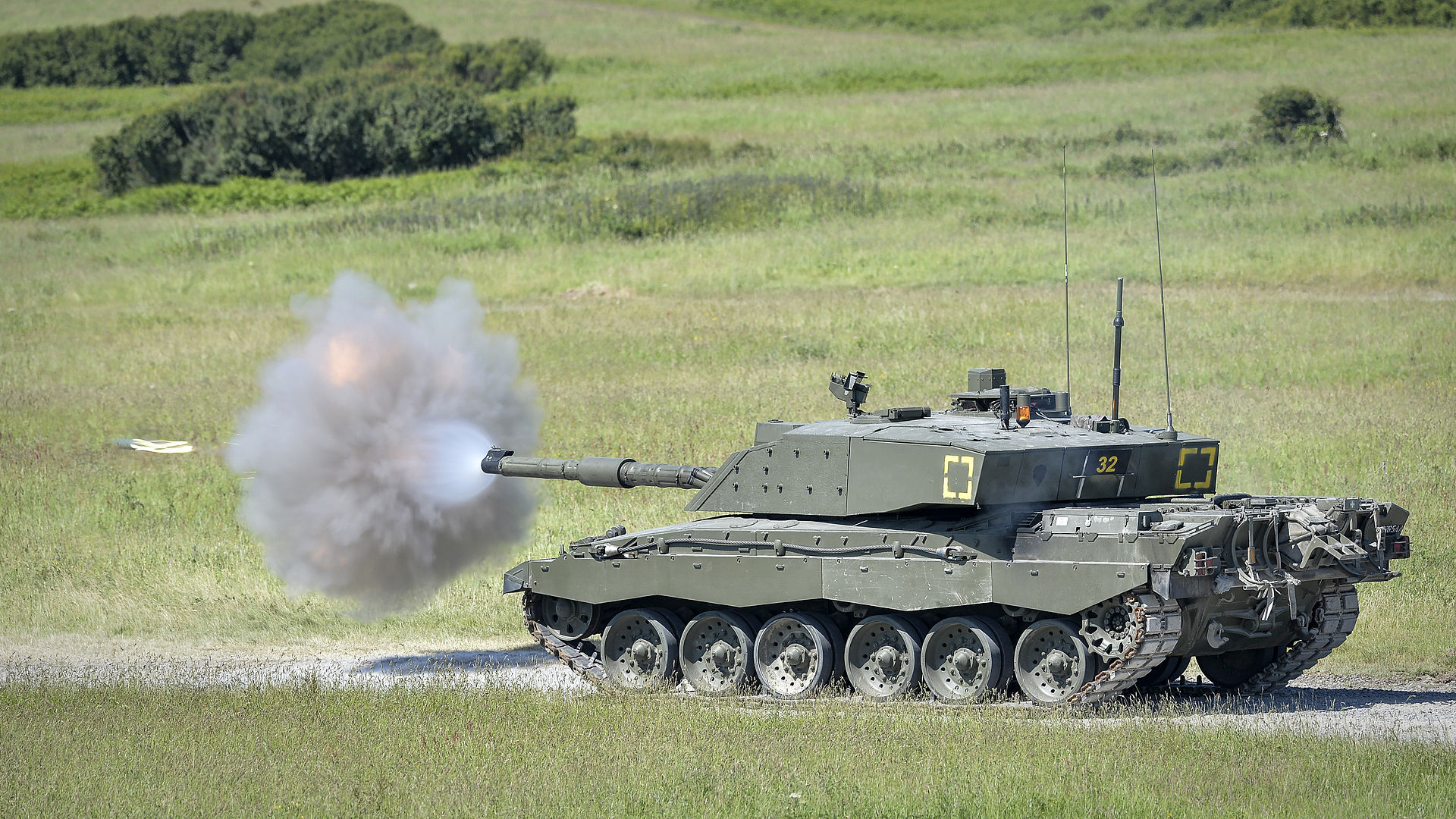

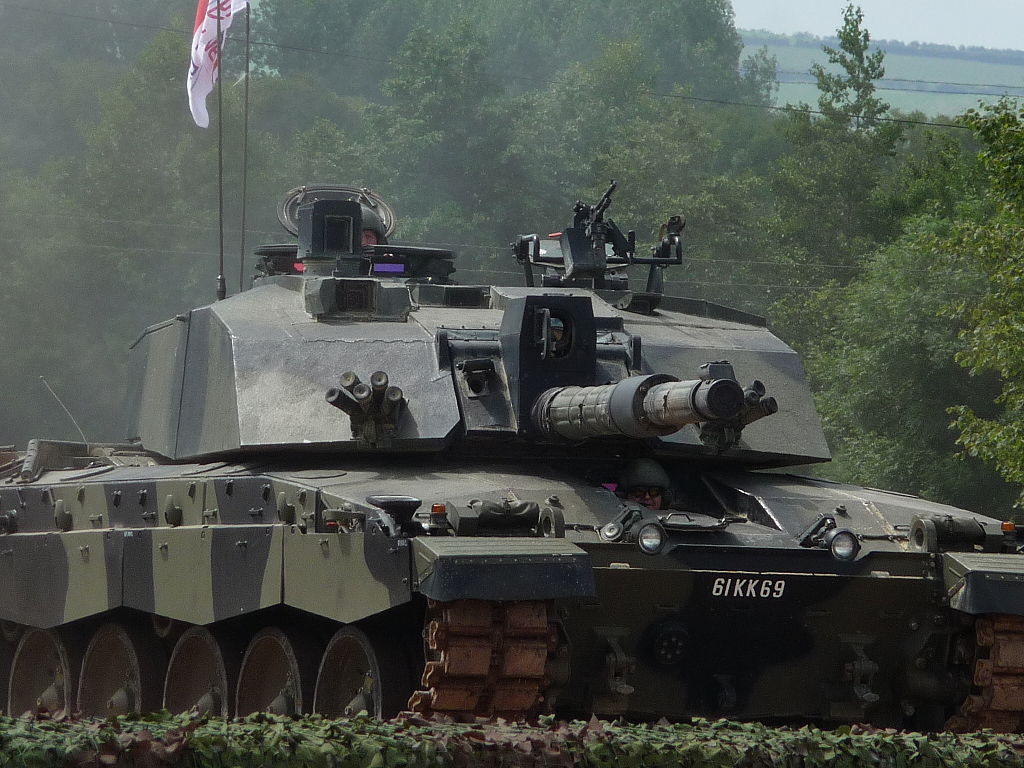
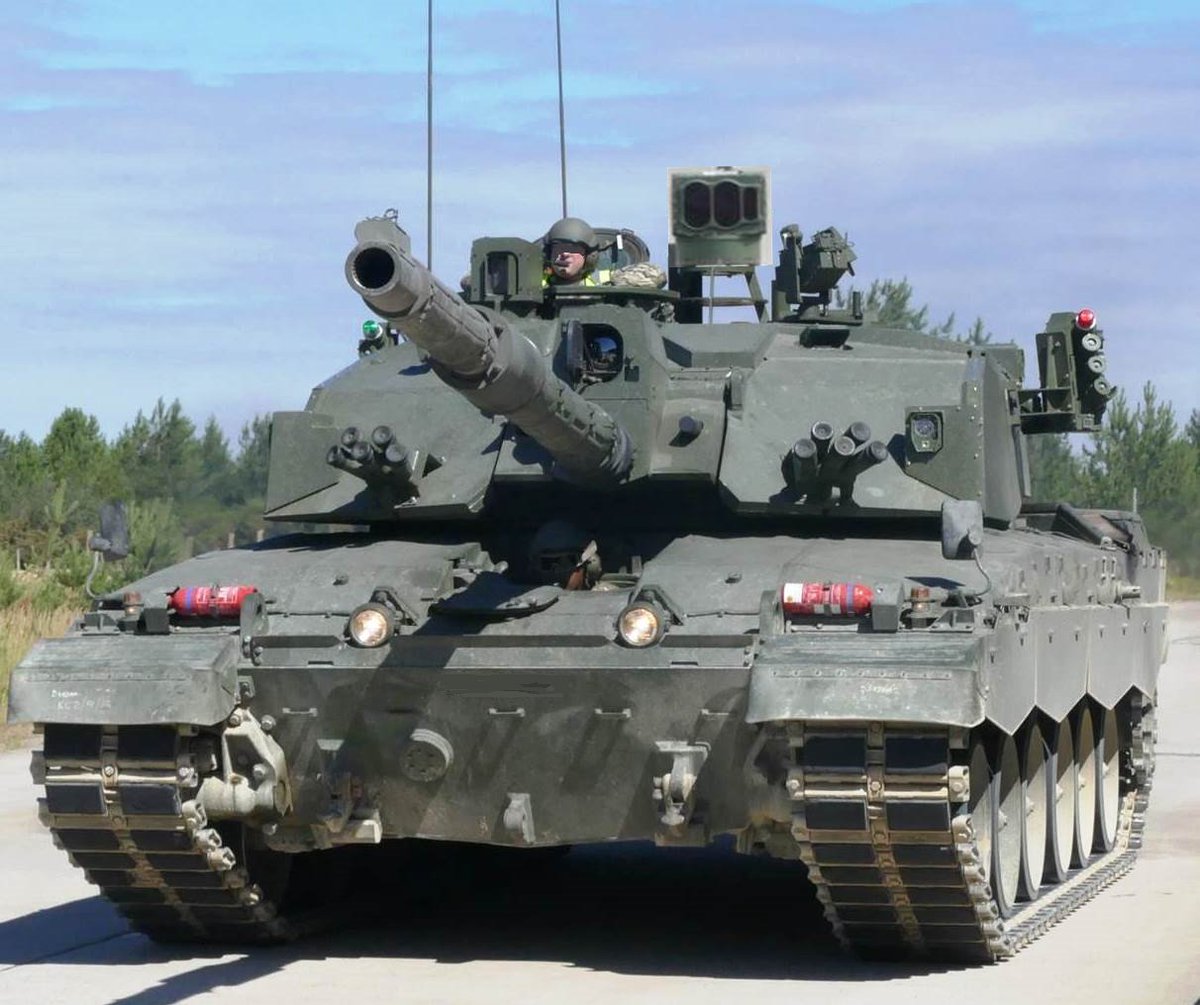
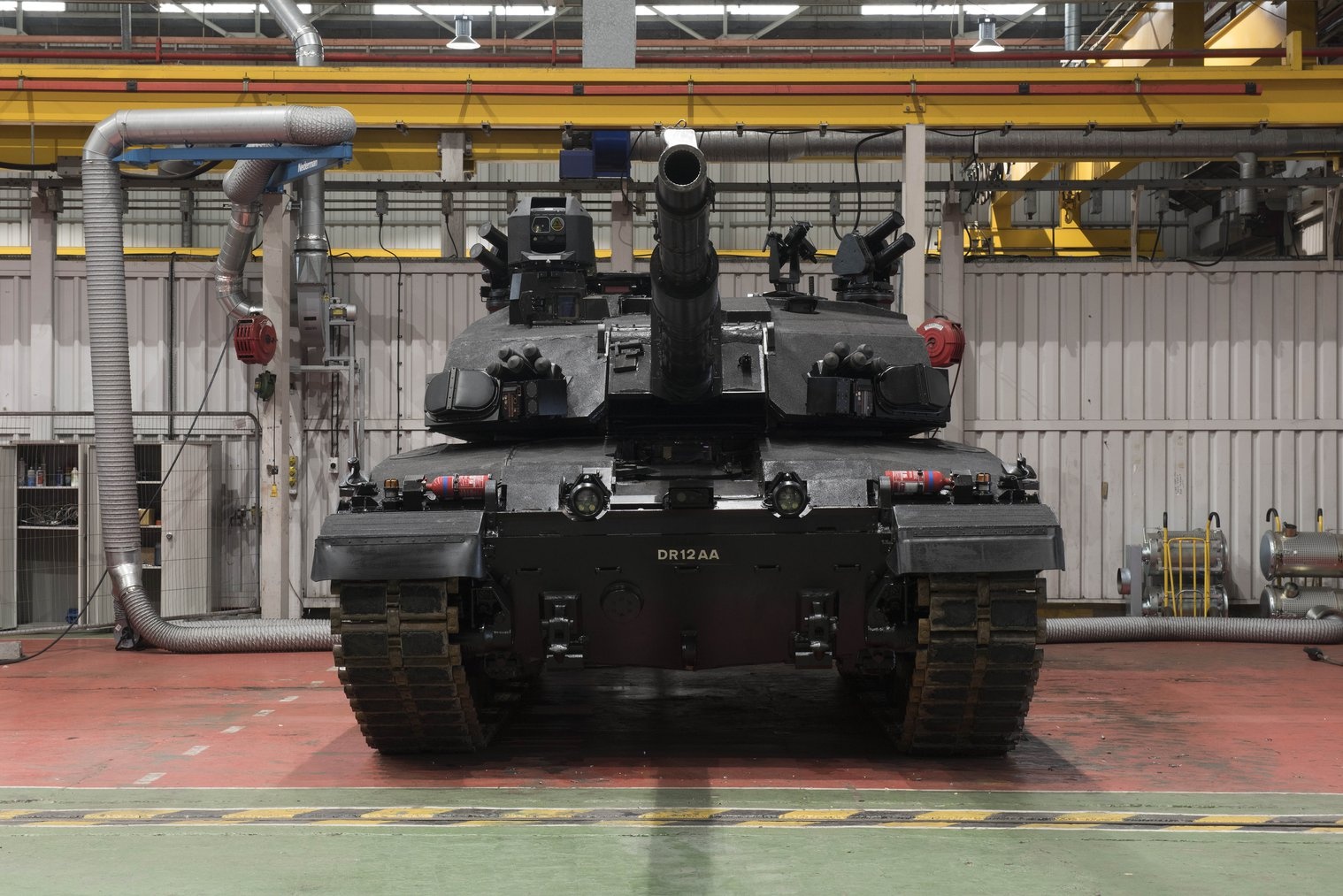

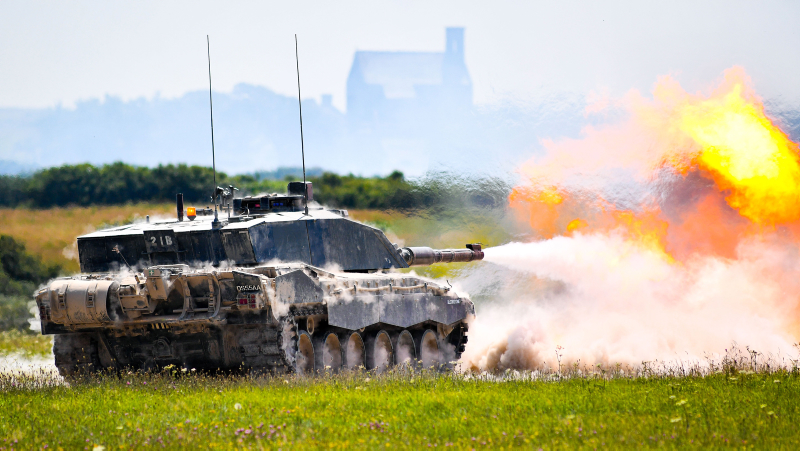

Collection of Challenger 2 posters in Russian, Arabic, Persian, Azeri and Kurdish:
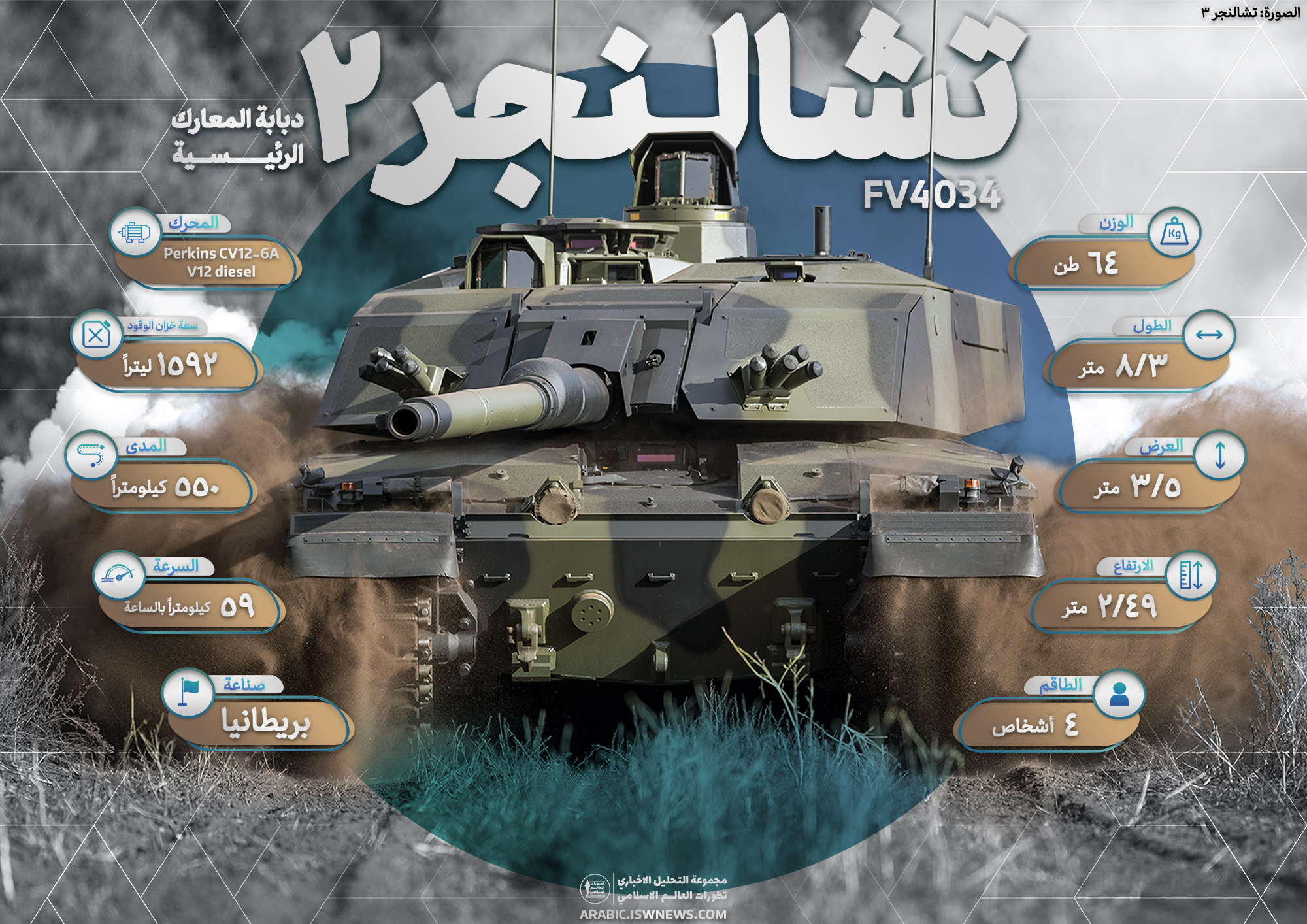
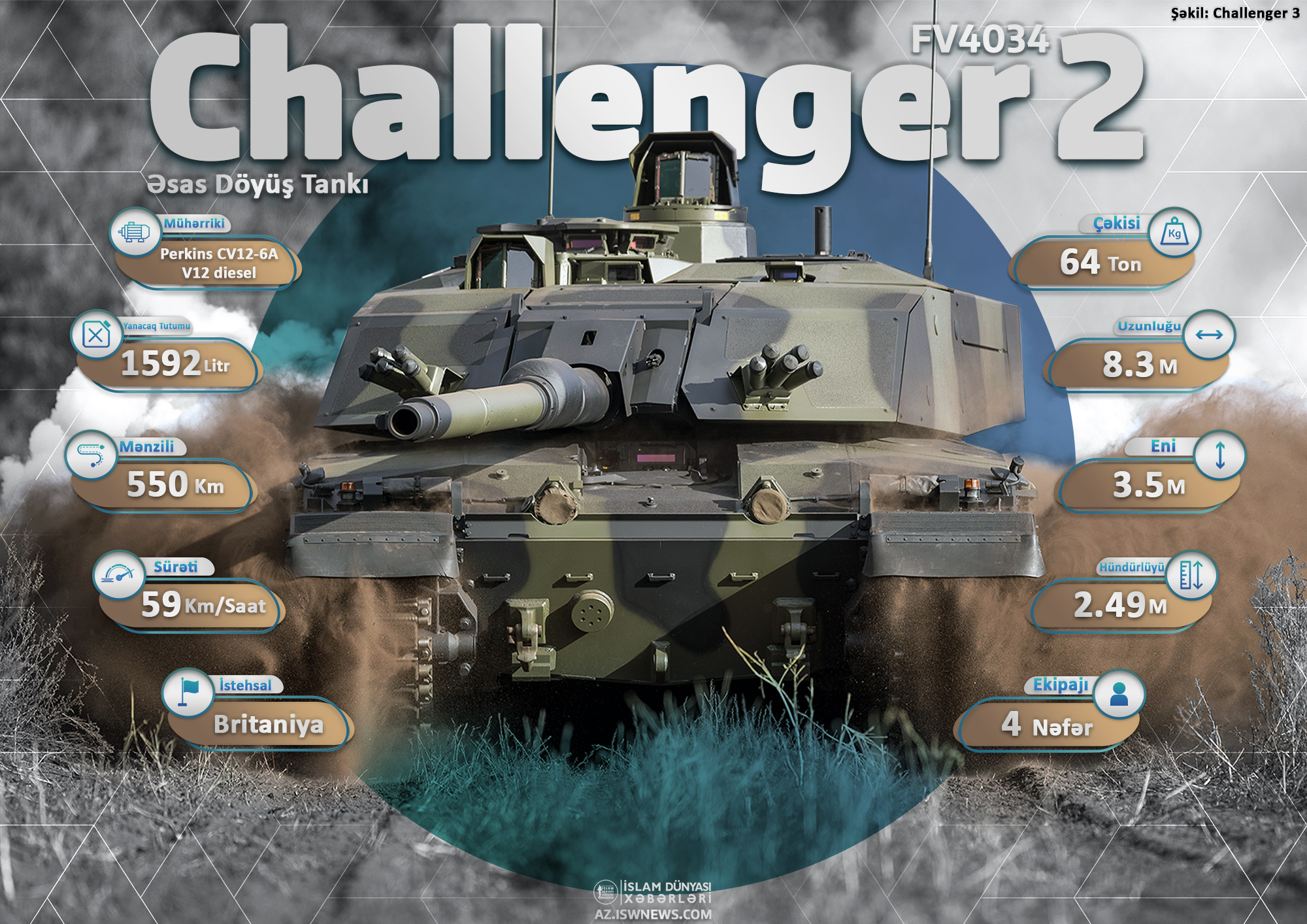

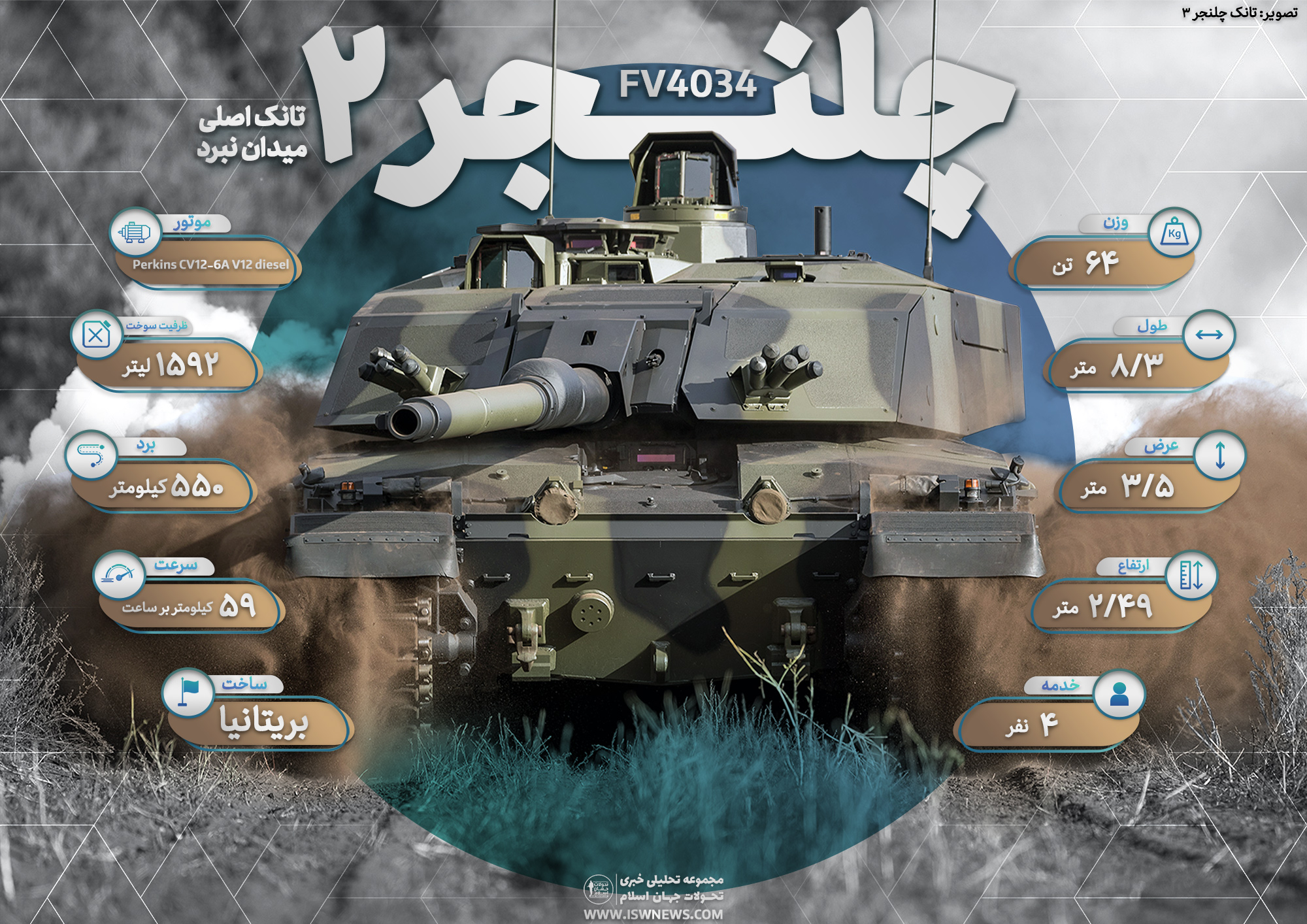

Source:
Challenger 2
Challenger 2 Main Battle Tank
Armour Challenger 2 from SB documentation
BAE unveils ‘Black Night’ – the first fully-upgraded Challenger 2 tank
Rifling


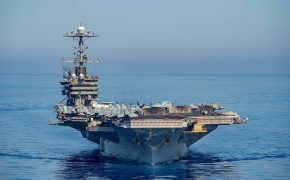

Comment